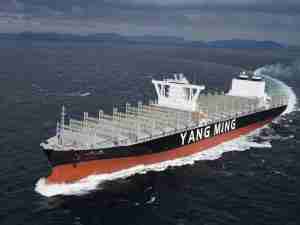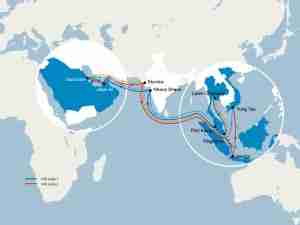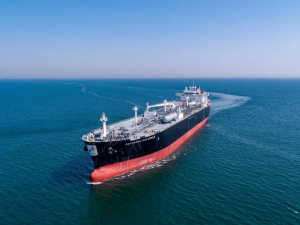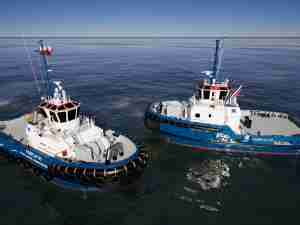The cost of war-risk insurance for vessels sailing through the Red Sea is spiraling, adding a further potential impediment to trade passing through a waterway already labeled too dangerous for merchant shipping by the US Navy.
Underwriters are now charging between 0.75% and 1% of the value of the ship to sail through the region, according to people familiar with the matter, jumping significantly since US and UK airstrikes targeted the Houthi rebels in Yemen at the end of last week. Just a few weeks ago, quotes for cover were about one tenth of that amount. The sharp increase runs the risk of making it too expensive to traverse the vital waterway.
Shipowners and charterers who are prepared to risk sailing through the Red Sea are having to weigh whether it’s cheaper to pay the mounting additional insurance costs as well as the transit fee for the Suez Canal, or instead take the long route around the Cape of Good Hope and in so doing rack up additional fuel bills.
“War risk insurance premiums for ships have skyrocketed,” Clarksons Securities analysts including Frode Morkedal said in a report. “Shipowners and charterers may find that rerouting around Africa is more cost-effective than incurring the combined costs of Suez Canal transit fees and insurance premiums.”
A war insurance cost of 1% for a newbuild ship worth $100 million would mean having to pay $1 million just to sail through the riskiest parts of the Red Sea and Gulf of Aden. Cover is generally quoted as a percentage of the value of a vessel over a given time period.
On Monday, a US commercial ship was hit by a missile while sailing in the Gulf of Aden, underscoring the persistent risk to vessels in the region. That came as Bimco, a key trade group, highlighted a US Navy warning that shipping companies should consider avoiding the area.
In addition, the US Department of Transportation issued an updated alert advising its merchant vessels to avoid the Southern Red Sea until further notice. A previous alert had warned vessels to stay away for 72 hours.
“Rates are increasing which is reflective of the significant and opaque risk exposure within the Red Sea,” said Munro Anderson, head of operations at marine war risk and insurance specialist Vessel Protect. “The key difficulty presented by the current situation is the rate of change in risk profile leading to far more dynamic pricing than would normally be the case.”












